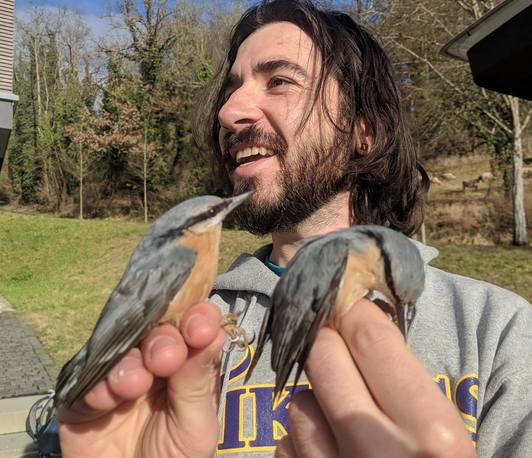Doctoral defense by James A. Klarevas-Irby
Supervised by Prof. Dr. Damien Farine
- Date: Sep 19, 2022
- Time: 03:00 PM - 05:00 PM (Local Time Germany)
- Speaker: James Klarevas-Irby
- Location: Online oral examination
- Room: Online

Dispersal—the process by which individuals depart their natal range, transit through the environment, and settle into new areas—is one of the most fundamental and pervasive life history phases in the animal kingdom. Typically, dispersal is motivated by individuals’ need to avoiding breeding—and competing—with kin, or to secure access to the resources necessary to reproduce. In order to reap the benefits of dispersing, individuals often have to travel large distances—a process which can be subject to constraints on behavior and impose significant physiological costs. For dispersal to retain its adaptive value, selection should therefore favor behaviors which mitigate the costs of dispersing. In this thesis, I aimed to understand how the behavior of dispersing animals reflects the costs that they face in making such large movements, with the ultimate goal of understanding the strategies that have evolved to overcome these costs.
Much of the study of dispersal to date has focused on individuals’ decisions to depart or settle in a given area. By contrast, there has been relatively little attention paid to the movements of transient individuals, despite transience being the active component of dispersal, and encompassing many of its associated behaviors. Many of the greatest barriers to successful dispersal are thought to be most present during this active stage, from increased risks of predation, to energy use, to navigational challenges. By investigating not only where, but how and when dispersers move while transient, research into this critical stage of dispersal will prove key to understanding how animals respond to these costs. However, studying transience behaviors is a particularly difficult endeavor, not only because of the challenge of tracking dispersing individuals, but also because of the need to establish a meaningful frame of reference against which to evaluate these behaviors. In this thesis, I studied the dispersal movements of transient animals through the use of high-resolution GPS tracking devices deployed in a wild population of free ranging vulturine guineafowl (Acryllium vulturinum) in Laikipia county, Kenya. In each of my chapters, I examined the changes in movement behaviors exhibited by transient individuals, and drew inferences about the strategies that they express by making direct comparisons between dispersing individuals’ behavior across different stages, and between dispersing and non-dispersing birds in similar time frames.